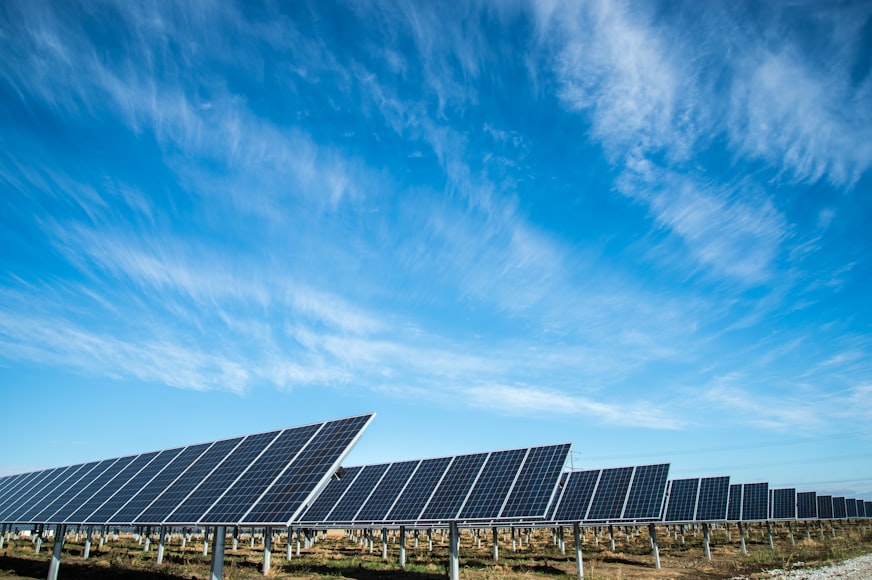
Since the beginning of the Industrial Revolution, humans have relied heavily on fossil fuels to power their homes and workplaces, primarily due to the convenience and cost-effectiveness that petroleum-based energy supplies offer compared to renewable forms of energy. But as scientists continue to delve deeper into the causes and consequences of climate change, more people are looking for ways to combat it by reducing their dependency on non-renewable resources. While you can’t stop climate change from happening altogether, you can take steps towards decreasing your carbon footprint by using these 10 alternative energy sources at home or in your business today!
1) Solar

Solar energy is one of the most popular types of alternative energy, and for good reason. Solar panels are relatively easy to install and can provide a significant amount of power for your home. Plus, solar energy is free once you’ve installed the initial equipment. There are a few downsides to solar power, however. Solar panels can be expensive, and they require a sunny location to work well.
2) Wind
Wind is one of the most popular forms of alternative energy, and it’s easy to see why. Wind is a clean, renewable resource that can be used to generate electricity. And, best of all, it’s free! Wind power has been used for centuries to pump water and grind grain. Today, wind turbines are used to generate electricity. Wind power is one of the fastest-growing forms of alternative energy in the world.
3) Bioenergy

Bioenergy is a type of renewable energy that comes from organic matter, such as plants and animals. It can be used to generate electricity, heat, or transportation fuels.
Bioenergy is a versatile energy source that can be used in many different ways. For example, it can be used to generate electricity, heat, or transportation fuels.
There are many different types of bioenergy, each with its own advantages and disadvantages.
4) Hydroelectricity
Hydroelectricity is one of the most common forms of alternative energy, and it can be used to power your home. Hydroelectricity is generated by the force of moving water, and it can be used to generate electricity. Hydroelectricity is a renewable resource, and it is one of the most efficient forms of energy generation. Hydroelectricity is also one of the most expensive forms of energy generation, but it is worth the investment.
5) Geothermal energy

Geothermal energy is a type of renewable energy that comes from the heat of the earth. It can be used to heat your home or to generate electricity. Geothermal energy is a clean and sustainable resource that can help reduce your carbon footprint. Some geothermal power plants use steam to generate electricity, while others use hot water. There are also direct-use applications, such as space heating and cooling, which do not require electricity generation.
6) Tidal energy
Tidal energy is a form of hydropower that converts the energy from tides into electricity or other forms of power. Tidal energy is a renewable resource, and it can be harnessed in a number of ways, including with turbines, dams, and barrages. Tidal energy is not without its challenges, but it has great potential as an alternative energy source.
7) Wave power

Wave power is a type of renewable energy that can be harvested from the ocean. Waves are created by the wind blowing over the surface of the water, which causes the water to move in a certain direction. This energy can then be used to generate electricity or to power homes and businesses. Wave power is a reliable and sustainable source of energy that can help reduce our reliance on fossil fuels.
8) Osmotic power
Osmotic power, also known as blue energy or salinity gradient power, is a method of generating electricity by using the difference in salt concentration between freshwater and seawater. To generate electricity, a membrane is used to separate the two types of water, and as the freshwater flows into the seawater, it creates pressure that can be harnessed to generate power.
9) Fuel cells

Fuel cells are a type of alternative energy source that can be used to power your home. Fuel cells work by converting chemical energy into electrical energy, and they can be used to generate heat and power your home. Fuel cells are a clean and efficient way to generate electricity, and they have the potential to revolutionize the way we power our homes. There are a few different types of fuel cells, and each has its own advantages and disadvantages.
10) Batteries

Batteries are a type of alternative energy source that can be used to power your home. They can be charged using solar panels or other renewable energy sources, and then used to provide power when the sun isn’t shining or the wind isn’t blowing. Batteries are a great way to store energy for later use, and can be a backup power source in case of an emergency.

